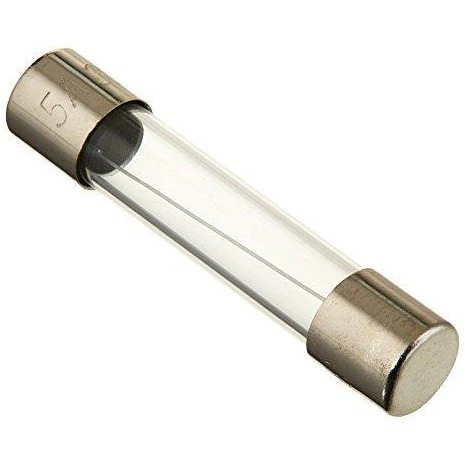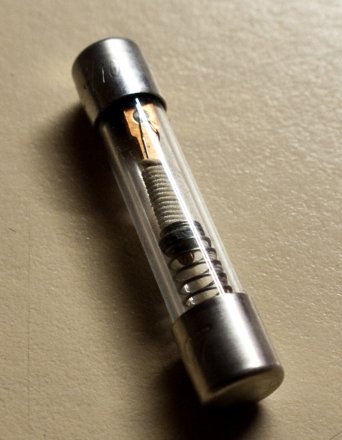Fuses types include cartridge, plug, blade, resettable, and high voltage, each designed for specific current capacities and applications in various settings.
Cartridge Fuses
Cartridge fuses are important parts of residential and commercial electrical systems that protect from overcurrent conditions that could cause electrical fires or equipment damage. Cylindrically-shaped, enclosed fuses that are manufactured from of glass, ceramic, are common types of fuses. Their design allows them to hold the arc when the fuse blows, which in turn is safer to prevent fire hazards.
Design and Variants
In order to fit various DMMs and applications, cartridge fuses come in a variety of sizes and ratings. The standard size is then somewhere between 5mm x 20mm and 1 inch x 4 inches, but can heavily differ depending on individual requirements of the protected electrical system. Two types of these fuses include the general purpose fuses used in residential and light commercial applications here in the United States, and the HRC fuses used in industrial applications is other places, were higher voltage and current ratings are needed for the circuit protection.
How They Work
Cartridge fuses are simple in concept, using a length of wire or filament inside that melts when more current passes through it than a certain value. If there is a fault, the extra current interrupts the circuit which stops the flow of more charge, therefore saving the wiring and not overheating the circuit. It is important to ensure the fuse responds to overcurrent with enough precision to reduce equipment downtime and repairs.
Common Applications
Cartridge fuses are sometimes used in place of circuit breakers in residential applications in place of circuit breakers. They are used for general use in all kinds of modern applications, such as in power distribution and home appliances in AC-3 category, in which loads often have high inrush currents. These are used to provide protection to machinery, transformers and the different electrical equipment, especially in the commercial and industrial environments.
Selection Criteria
The choice of the cartridge fuse depends on the voltage and the current of the circuit as well as the type of load (resistive load or inductive load). The fuse current rating needs to be coordinated with the circuit's normal operating current so that it does not blow the fuse when the equipment is properly operating, yet it does clear reliably in the event that it overcurrents. For example, an initial start of the motor might demand a higher rated ampere fuse for a motor circuit.

Plug Fuses
Plug fuses are a common type of fuses used in household electrical systems. These fuses are made up of a simple construction and provide effective protection which helps in keeping away electrical overload or fire incase you forget to unplug your iron. The fact that plug fuses fit inside a fuse socket or holder means they are easy to replace, and-depending on the type-may be pulled out for inspection.
Types and Features
Plug fuses come in many shapes and sizes but two popular versions are the standard one-time uses that blow and have to be replaced and "time-delay," so they can absorb brief surges of electricity. They are particularly useful in circuits that have appliances that require a lot of power when they are starting to run - motors and some heating appliances.
Operation Mechanism
How Does A Plug Type Fuse Work This type of a fuse has a very simple mechanism, a metal wire, or strip which melts when the current flows exceeding the allowable limit, hence interrupting the flow of current through that circuit. This simple act can prevent serious, costly and dangerous electrical fires and damage to your home.
Application Specifics
Plug fuse is for the most part used in residential buildings. For use in circuits that feed the lighting fixtures, outlets, and small appliances. Whether to use a time-delay fuse over a common fuse will determine on what kind of appliances are on the circuit. Circuits that support items that initially need a surge of current like were in refrigerators, air conditioners, washers can be improved with time delay fuses.
Choosing the Right Fuse
Selecting the right plug fuse involves considering the amperage rating of the circuit and the characteristics of the electrical load. It is vital to choose a fuse whose rating closely matches or slightly exceeds the normal operating current of the circuit. Using a fuse with a too-high rating can compromise protection, while a too-low rating can lead to frequent fuse replacements.
Blade Fuses
Blade fuses, often used in the automotive industry, maximize the protection of the increasingly complicated electrical systems stored inside of new vehicles that require added features to guard against overcurrent and short circuits. These are fuses with a plastic body and two metal prongs in the middle, and are designed to offer fast, reliable protection when space is at a premium.
Design and Types
Blade fuses are color coded and depending on what the color of the fuse is, that is its current rating (each color is a different size). That red blade fuse, for example, might tell you that the fuse is rated for 10 amps of load, while the blue one down the line is rated for 15 amps. Common types are the standard ATC (Automotive Type Cartridge) as used in most cars, and the mini fuses, used where space is especially limited.
How They Function
A blade fuse operates on the simple and effective principle that an element in the fuse, usually a thin wire, will melt if the current exceeds the safe limit, thereby interrupting the circuit and stopping any further flow. Speed is essential to minimizing potential harm to the vehicle's electrical systems and wiring.
Applying to Vehicle Systems
Blade fuses can be found in a wide range of systems in your car - from the radio to the headlights, or the AC, etc. All 3 of these circuits have fuses with distinct ratings that correspond to their average current loads, ensuring that the fuse only blows when there is an abnormal spike in current that could damage the electronics and appliances using the circuits.
Installation and Replacement
For a blade fuse, the replacement process is simple to unclip the blown fuse and insert a new fuse with your blade fuse of the same color and the same rating. This job is entirely tool-free and can be done in a matter of seconds, which provides a user-friendly solution to ensure vehicles remain safe. Replacement should be done with the power off to avoid any possible electric shock or damage.
Resettable Fuses
Resettable fuses, aka Polymeric Positive Temperature Coefficient (PTC) devices, are a relatively new innovation in electrical circuit protection. This ability means that, unlike traditional fuses, they can become operational again after an overcurrent event, saving users from having to replace them and thereby reducing maintenance time and costs.
Design and Mechanism
Resettable fuses have a polymer matrix containing conductive particles. In the event of a normal operating condition, these particles form networks with low resistance, and the current easily passes through it without touching the fuse. Overcurrent causes the heat to inevitable up, where the heat produced will make the polymer to swell which raise the resistance and thus limits the current to come down to safe level. As the circuit cools down, the polymer contracts and the fuse is able to refasten itself, resetting the circuit and getting it back up again.
Advantages Over Classic Fuses
The main purpose of the resettable fuse is to re-conduct the circuit and continue until its life is extinguished, for those applications which are not so frequent that they need to replace the fuse or for certain products with high replacement costs. They are also super durable and maintain stability at virtually any temperature or level of current. It means less downtime and lower operating costs in the long run.
Common Applications
Circuit protection devices, like resettable fuses, are ubiquitous in consumer electronics, safeguarding smartphones, tablets, laptops and myriad other devices from overcharging or short circuiting. They are also increasingly found in auto applications, where their resistance to vibrational and temperature changes is of increasing importance. They are also useful in the industrial system due to their tough design in critical data communication and power supply circuits where they can be reset again and again.
Selection Guidelines
When selecting a resettable fuse, there are influences from the normal operating current, the maximum fault current and the ambient temperature of the application. With this, they can choose a device where the trip current is a little higher than the highest normal current expected but still much lower that would be harmful to the components in the circuit. A precise pick for maximum protection that does not hinder the device.

High Voltage Fuses
High volts fuses, over 1000 volt, are imperative components provided for protecting electrical systems and equipment such energizes at high voltage. The fuses are essential in power transmission and distribution networks and industrial applications, where they are used to protect apparatus service continuity and to prevent equipment malfunction due to over-currents.
Types and Characteristics
Different types of high voltage fuses exist, such as expulsion fuses, which release their gases to the outside to extinguish the arc, and current limiting fuses, which break the circuit by creating a high-resistance obstacle. Capacitor fuse - part of capacitor bank that protect the capacitor banks in electrical power system The type for each application and voltage rating is made in order to provide the best protection suitable for variety of environments.
How They Function
High Voltage Fuses provide an overcurrent except that they merely melt the fuse element. This breaks the path of the circuit and devastates the discharge of electrical arc in the enclosed region, so that no further damage can be caused. The inclusion of a quartz sand or some other arc-quenching medium in the design of the fuse helps in absorbing the energy, thus released during the interruption.
Key Applications
These fuses are mainly applied in electrical substations, with transformers, motor starters, and feeder lines. Their use is especially vital in power generation and industrial applications and in large-scale commercial operations in which a constant supply of electricity is necessary for operational systems to maintain their reliability.
Selection and Installation
The correct high voltage fuse suited for the application needs to know the voltage from the system and the maximum load current, as well as the performance of the equipment you want to protect. High voltage fuse is a precision safety protective device for high voltage circuit without loss of power, especially for load and short circuit protection which needs future breaking. High voltage electrical systems are dangerous, and professional installation is recommended.
